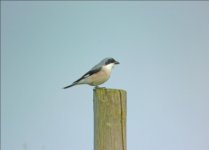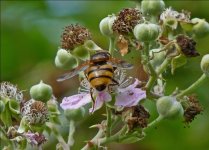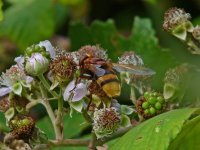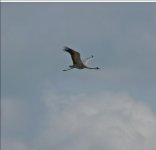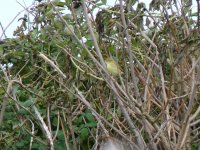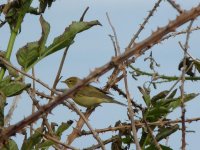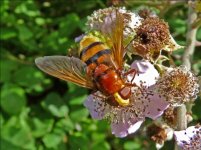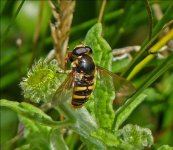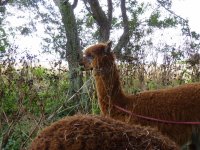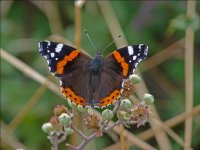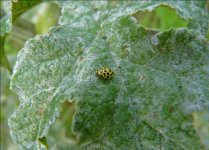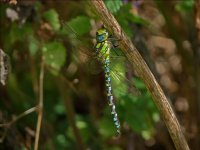Another flypast and a warbler quiz
The Red Arrows one day, Unidexter the Crane another. This is what I saw out of the North Hide at Cley this afters, as s/he put up every bird that was on the North Scrape, having come in from the east, like the Three Wise Men. As yet, no-one has offered an explanation of why the poor bird should be partially legless. Any offers ?
Can anyone explain, also, the weather today ? It's almost completely opposite to what was forecast- not that I'm grumbling.
Yesterday, I took the attached shots of this extreme vagrant warbler: they show how a bird can change its colour, depending on the light.
Yesterday, too, I was incredibly fortunate when the hover (Volucella zonaria) I’d been stalking for the 3rd day, crawled under my lens. I also saw my first Sericomyia silentis of the season (RH photo).





